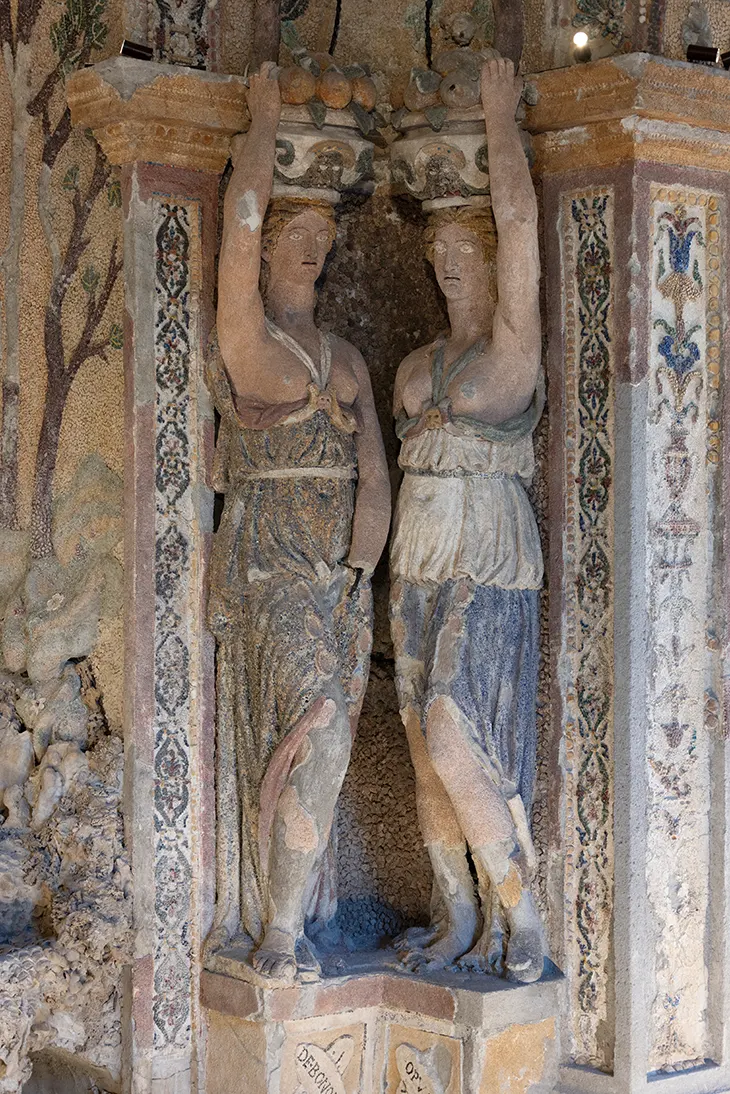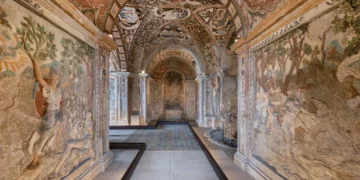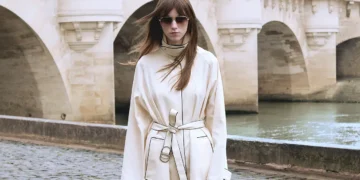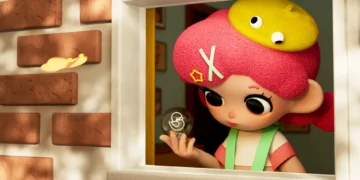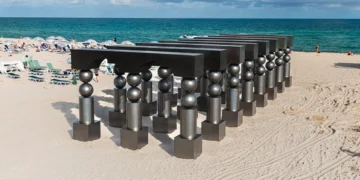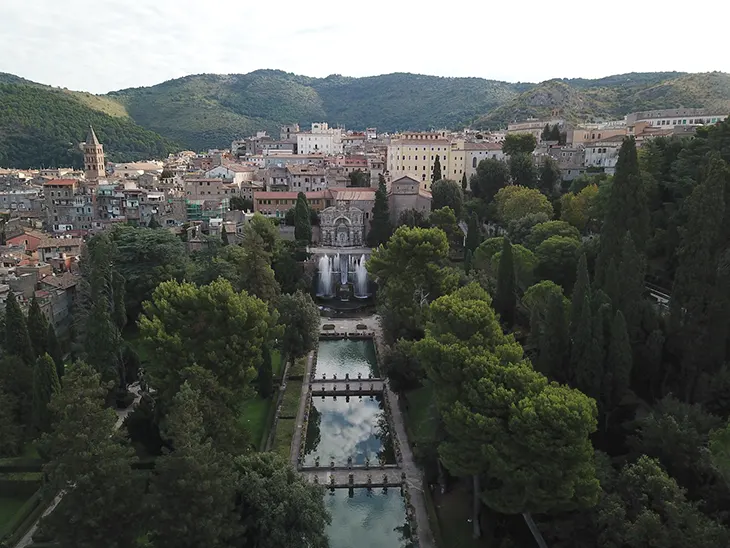
Starting May 6, 2025, with support from FENDI, the Grotto of Diana at Villa d’Este in Tivoli reopens to the public after nearly five decades of closure. Located beneath the Loggia of the Winds and hidden from view since the 1980s, the Grotto now returns to public life following an extensive two-year restoration. The project was driven by the Autonomous Institute of Villa Adriana and Villa d’Este (VILLÆ), with critical support from FENDI, marking another chapter in the Maison’s long-standing involvement in cultural preservation.
ARCHITECTURE
Built between 1570 and 1572 near the Palace of Ippolito d’Este, the Grotto of Diana once served as a theatrical space of light, water, and sculpture. Its unique layout, three vaulted arms extending from a central chamber, frames a complex decorative scheme inspired by Ovid’s Metamorphoses.
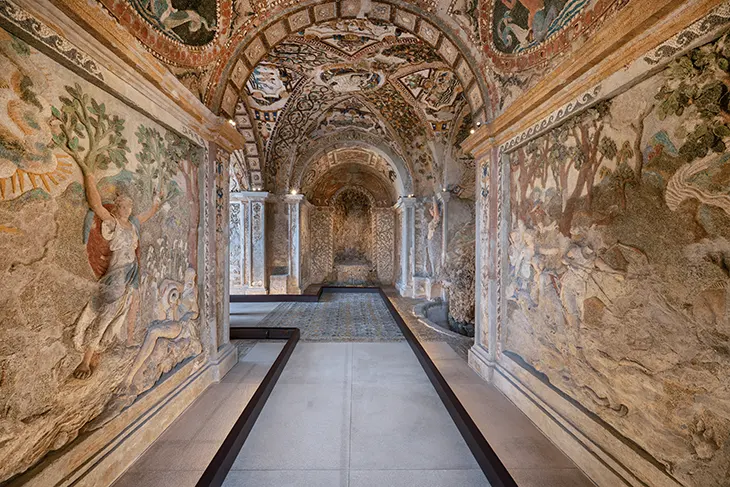
The restoration uncovered an extraordinary range of materials and iconography. From the central cross-vaulted space to the three side arms, every surface tells a layered story. The design features bas-reliefs, ancient statuary, and a vaulted ceiling rich in marine scenes and mythological figures. The four remaining canephorae, female caryatids balancing baskets of golden fruit, stand as sculptural anchors, while a white eagle at the center of the vault signals the Este family’s emblem.
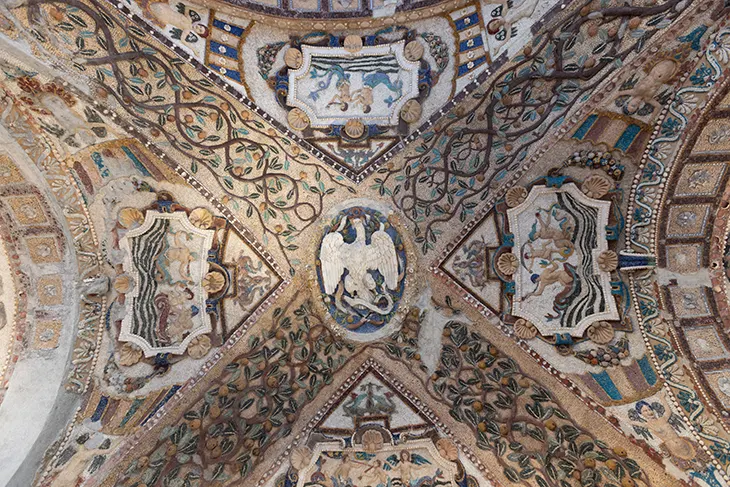
The floor mosaics alternate glazed terracotta tiles bearing Este lilies, eagles, and apples with a secondary flooring pattern in warm tones that leads to a loggia offering views across Tivoli and toward Rome. Eleven narrative scenes, most intact, one lost, and another still under review, recount mythological moments sourced directly from Ovid, with Diana and Minerva once positioned at central fountain points.
The project addressed both the artistic and architectural challenges of the space. Years of environmental exposure had left many elements vulnerable: oxidized supports, cracked mortar, worn mosaics, and compromised statuary. Initial analysis in 2023 revealed the extent of the degradation, prompting a full-scale conservation plan that extended to structural elements as well as decorative ones.
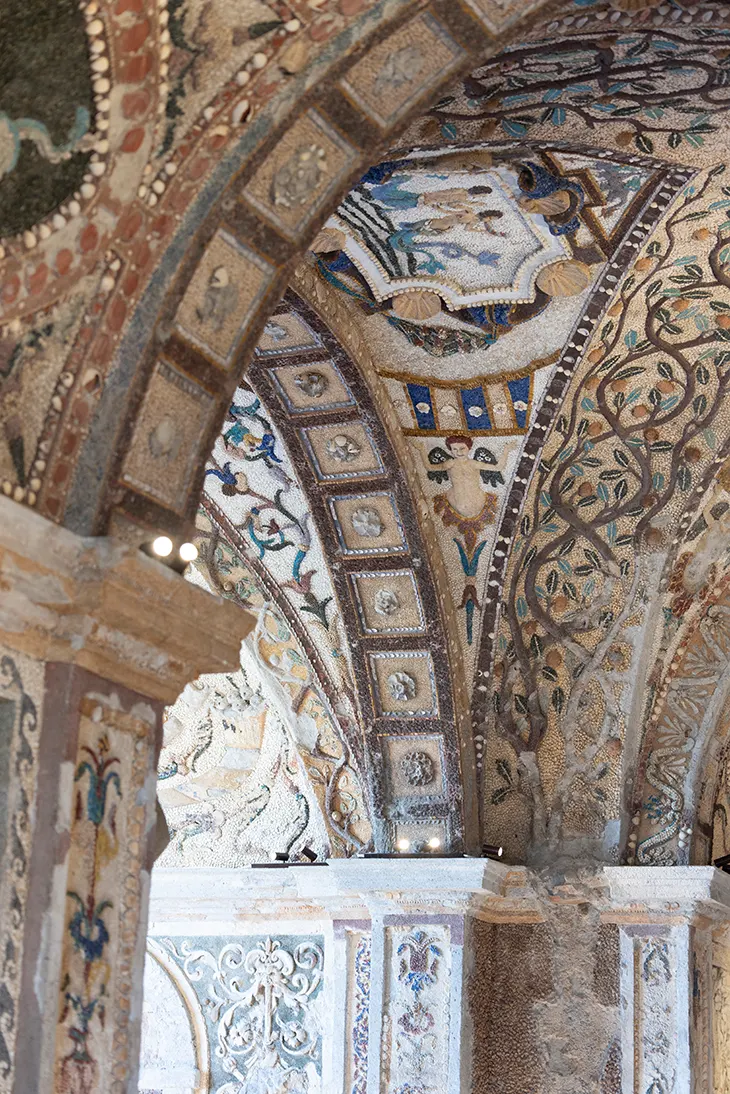
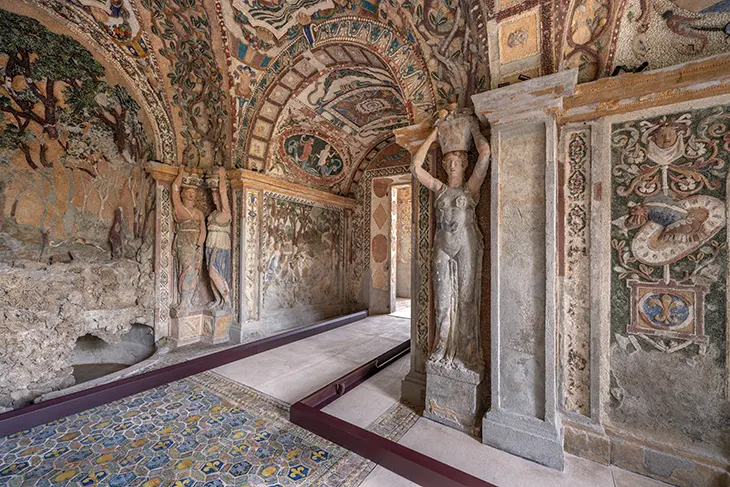
Technicians restored not only the interior’s symbolic program but also strengthened the external architectural frame. A new glass panel now protects the loggia from wind, historically one of the most damaging elements, while the lighting system was redesigned to enhance the grotto’s dramatic shadows, reflective materials, and spatial rhythm.
FENDI’s contribution to the project continues its track record of cultural sponsorships in Italy. From the Trevi Fountain to Palazzo della Civiltà Italiana, the Maison consistently invests in spaces where history and material presence hold architectural and emotional weight.
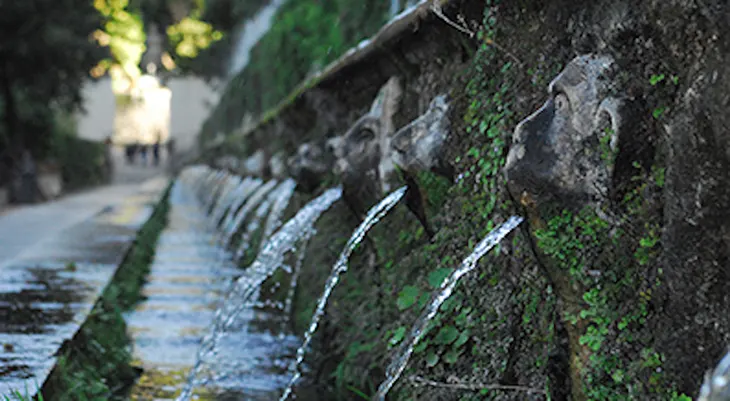
“Our involvement in the restoration of the Grotto of Diana is an act of love for Rome and its cultural depth,” said Silvia Venturini Fendi, Artistic Director of Accessories and Menswear. “This project, as we mark our centennial year, reflects our intent to care for the past while contributing to the future.”
Andrea Bruciati, Director of VILLÆ, echoed this sentiment, emphasizing how the restoration invites visitors to reengage with Villa d’Este’s many layers: “The Grotto doesn’t just reopen as an architectural site. It re-emerges as a cognitive and aesthetic experience – one that invites new reflection on how space, time, and imagination connect.”
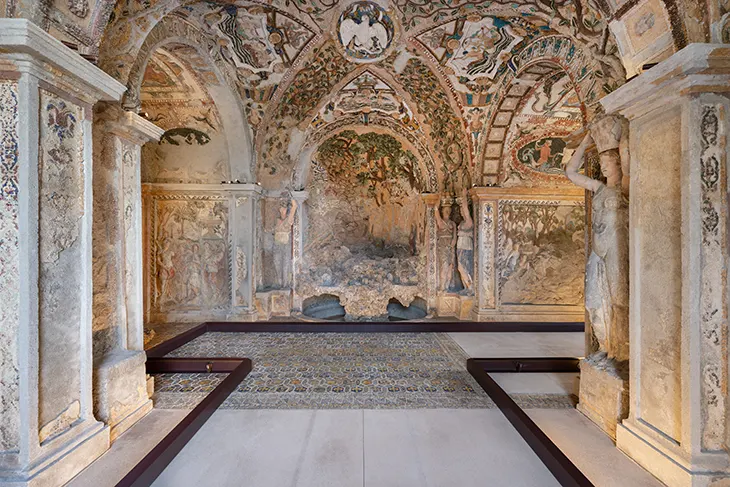
The Grotto of Diana now serves once again as a space for discovery. The restored textures, mineral mosaics, reflective shells, and carved figures, invite visitors into a dialogue between material and myth. Through this restoration, the site shifts from a neglected relic to a carefully reactivated space where memory and presence align.
